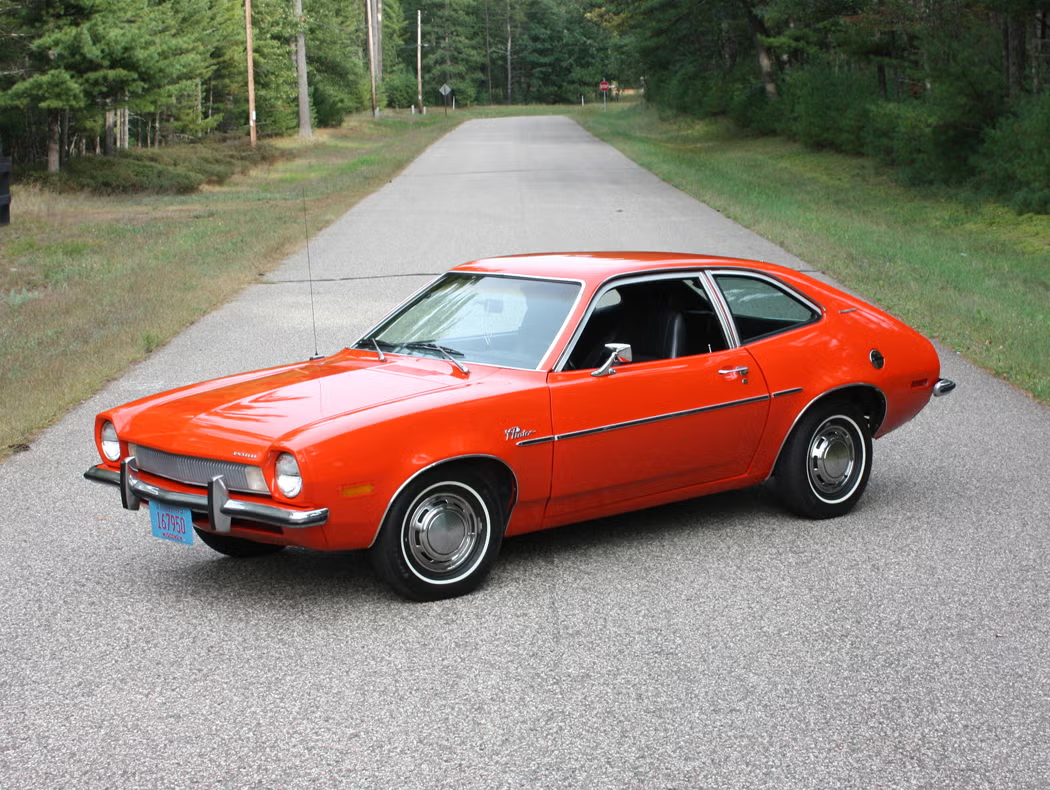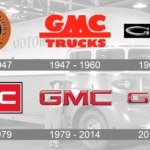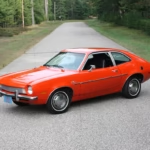

What Does GMC Stand For? The Canadian Story Behind a Legendary Truck Brand

If you’ve ever seen the bold three-letter badge “GMC” gleaming on a Sierra or Yukon and wondered what it stands for, you’re not alone. GMC is one of North America’s oldest and most respected truck brands, and its roots run deep in both American innovation and Canadian craftsmanship.
Limited Time Automotive Amazon DealsSo, what does GMC actually stand for? And how did it become such a key part of Canada’s automotive landscape? Let’s dig into the full story.
GMC Means “General Motors Company” — but It Started as Grabowsky Motor Company
The letters GMC officially stand for General Motors Company.
Limited Time Automotive Amazon DealsHowever, before GMC became a household name, it started in Detroit in 1900 as the Grabowsky Motor Vehicle Company, founded by brothers Max and Morris Grabowsky. Their mission was ambitious for its time: to build reliable, gasoline-powered trucks when most transport still relied on horses or steam engines.
In 1909, General Motors acquired the company and merged it with another early truck manufacturer, the Rapid Motor Vehicle Company. The new division became known as the General Motors Truck Company — or simply, GMC.
By 1912, the first official GMC truck rolled off the line. The name would go on to symbolize rugged dependability, and soon, those three letters were stamped onto trucks that shaped both American and Canadian industries.
GMC’s Canadian Connection
GMC isn’t just an American success story — it has a rich Canadian chapter, too.
General Motors of Canada was founded in 1918 and quickly became one of the country’s largest manufacturers. For decades, GMC trucks were built right here in Canada, serving farmers, construction crews, and families from coast to coast.
In fact, during the mid-20th century, GM’s Oshawa Assembly Plant in Ontario and St. Catharines Engine Plant produced a variety of GMC and Chevrolet vehicles for the Canadian market. These plants played a crucial role in the country’s manufacturing sector and are still part of GM Canada’s operations today.
For many Canadians, a GMC pickup has long been more than a vehicle — it’s a symbol of hard work, northern toughness, and reliability in all four seasons.
A Century of Evolution: How GMC Shaped Canada’s Truck Market
1900s–1920s: From Workshop to Workhorse
After GM’s acquisition, GMC became one of the first truck brands to mass-produce gasoline vehicles. The company supplied commercial haulers and early utility trucks, some of which were exported to Canada for logging and agricultural use.
1940s: GMC Goes to War
During World War II, GMC produced over 600,000 military trucks for Allied forces — including Canadian troops. Many of these vehicles, like the GMC CCKW 2½-ton truck, became legends on and off the battlefield.
1950s–1970s: The Birth of the Modern Pickup
Post-war prosperity saw the rise of pickup culture across Canada. GMC introduced models like the Sierra, which quickly became a go-to truck for Canadian tradespeople, farmers, and outdoor enthusiasts.
1980s–2000s: Strength and Refinement
Through the 1980s and 1990s, GMC began focusing on premium utility and comfort, giving birth to luxury-oriented trims and family-friendly SUVs such as the Yukon and Envoy. Canadian buyers loved the balance between rugged power and upscale design.
2010s–Present: Professional Grade, Canadian-Built
Today, GMC markets itself under the slogan “We Are Professional Grade.” Its lineup — from the Sierra 1500 to the Canyon, Yukon, and Terrain — is built to handle everything from Alberta winters to Quebec construction sites, all while maintaining a refined, comfortable interior.
GMC vs. Chevrolet: What’s the Difference in Canada?
Since both GMC and Chevrolet operate under General Motors Canada, many models share platforms and powertrains. Yet their appeal and positioning differ:
| Aspect | GMC | Chevrolet |
|---|---|---|
| Market Position | Premium, professional-grade | Mainstream, versatile |
| Focus | Design, refinement, advanced towing | Accessibility, sporty styling |
| Top Models in Canada | Sierra 1500 Denali, Yukon AT4, Terrain Denali | Silverado 1500, Tahoe, Equinox |
| Price Range | Slightly higher (more premium features) | Broader affordability |
Essentially, GMC appeals to Canadians who want luxury without sacrificing power, while Chevrolet caters to those looking for performance and value.
GMC’s Denali and AT4: Built for Canada
Two sub-brands define GMC’s modern identity — both perfectly suited for Canadian conditions:
- Denali: Represents the pinnacle of GMC luxury — think Nappa leather, chrome accents, and advanced safety tech.
- AT4: Engineered for off-road capability with features like skid plates, lifted suspensions, and all-terrain tires — ideal for snow, gravel, and rural roads across Canada.
Whether it’s a Yukon Denali cruising through downtown Toronto or a Sierra AT4 tackling a logging road in British Columbia, GMC’s lineup is designed for Canada’s unique blend of urban and wilderness driving.
GMC in the Electric Era
GMC is now embracing the next frontier — electrification.
The GMC Hummer EV and upcoming Sierra EV represent the brand’s shift toward zero-emission power without compromising performance.
Canadian drivers can expect increased access to electric GMC models through GM’s Ultium platform, which will support future production and infrastructure expansion across Canada.
Why GMC Still Matters to Canadians
- Built for Tough Climates: GMC vehicles are engineered for durability in harsh weather — a key factor in Canada’s cold regions.
- Strong Towing & Payload: Perfect for cottage trips, boat towing, and worksite hauling.
- Premium Comfort: Combining practicality with luxury, ideal for long Canadian commutes.
- Made by a Trusted Manufacturer: GMC continues to operate under General Motors Canada, with parts, service, and dealer support nationwide.
Final Thoughts: What GMC Really Stands For in Canada
While the name GMC literally stands for General Motors Company, for Canadians it has come to mean much more:
grit, mastery, and confidence.
From the farmlands of Saskatchewan to the streets of Vancouver, GMC has earned a reputation for professional-grade quality, cold-weather toughness, and everyday reliability.
Whether you drive a Sierra, Canyon, Terrain, or Yukon, that badge on the grille isn’t just a name — it’s a century-old promise of performance that’s proudly built for Canada.
Frequently Asked Questions (FAQ) — GMC Meaning & Brand History in Canada
1. What does GMC stand for?
GMC stands for General Motors Company, originally known as the Grabowsky Motor Company. Founded in 1900 in Detroit, it became part of General Motors (GM) in 1909. Today, GMC is GM’s dedicated brand for trucks and SUVs, emphasizing durability and premium design.
2. Is GMC American or Canadian?
GMC is an American brand owned by General Motors, but it has deep ties to Canada.
Many GMC vehicles have been built in Canadian assembly plants like Oshawa and St. Catharines, and GMC remains one of the top-selling truck brands across the country. In short, it’s a North American success story shared by both nations.
3. What was the first GMC vehicle ever made?
The first official GMC-branded truck was built in 1912, following GM’s acquisition of the Rapid Motor Vehicle Company and the Grabowsky Motor Vehicle Company.
That same year, GMC produced over 22,000 trucks, marking the beginning of its long legacy in commercial and consumer transport.
4. What is GMC known for today?
GMC is best known for its professional-grade trucks and SUVs.
Flagship models like the Sierra, Yukon, Canyon, and Terrain are engineered for both rugged work and refined comfort. GMC also leads in premium sub-brands like Denali (luxury) and AT4 (off-road).
5. Is GMC the same as Chevrolet?
GMC and Chevrolet are sibling brands under General Motors, sharing platforms and engines but targeting different markets.
- Chevrolet focuses on mainstream appeal and affordability.
- GMC offers upscale styling, advanced interiors, and professional-grade craftsmanship.
Think of it this way: Chevrolet builds for everyone; GMC builds for those who want a little more.
6. What’s the difference between GMC Denali and AT4?
- Denali represents GMC’s luxury line, featuring premium leather, chrome finishes, and cutting-edge tech.
- AT4 is the off-road-focused trim, built for Canadian terrain with features like lifted suspensions, all-terrain tires, and skid plates.
Both trims highlight different sides of GMC’s “Professional Grade” DNA.
7. Does GMC make electric vehicles?
Yes. GMC is leading GM’s electric revolution with the GMC Hummer EV and GMC Sierra EV.
These models use Ultium battery technology and deliver instant torque, long-range capability, and zero tailpipe emissions — perfect for drivers in provinces offering EV incentives like Ontario, Quebec, and British Columbia.
8. Where are GMC trucks made for the Canadian market?
Most GMC trucks sold in Canada are built in North American plants, including:
- Fort Wayne, Indiana – Sierra 1500
- Silao, Mexico – Sierra Heavy Duty models
- Oshawa, Ontario (GM Canada) – light-duty trucks and special builds
These production sites ensure that Canadian models meet North American standards for towing, safety, and winter performance.
9. Are GMC vehicles reliable in Canadian winters?
Absolutely. GMC’s trucks and SUVs are designed for cold-weather durability, featuring 4×4 systems, block heaters, and traction control ideal for snowy and icy roads.
Models like the Sierra AT4 and Yukon Denali AWD are especially popular in Canada for their winter-ready engineering.
10. Why is GMC so popular in Canada?
GMC resonates with Canadians because it embodies strength, practicality, and refinement — the perfect mix for life in Canada’s diverse climate.
Whether hauling equipment in Alberta, driving through Ontario winters, or exploring the Rockies, GMC vehicles deliver a balance of power, reliability, and comfort that few brands can match.
Add a comment Cancel reply
Categories
- Auto Detailing (1)
- Car News (2)
- Car Reviews (1)
- How To (1)
- Uncategorized (165)
Recent Posts
About us

Related posts


Peut-on vraiment se fier à la capacité de remorquage d’un véhicule?








